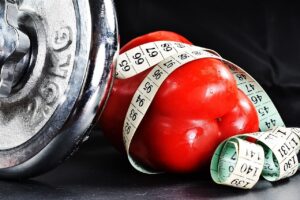
Nutriscore under fire as French Roquefort producers voice dissent
French Roquefort producers are calling for a re-evaluation of the Nutriscore food labelling system after their celebrated cheese was given a lowly ‘E’ ranking, effectively relegating it to the same nutritional category as crisps and sodas.
Roquefort is an internationally renowned delicacy, rich in calcium and protein. Yet its relatively high fat and sodium content prevent it from being ranked among healthier food options, despite the fact that it’s likely to be consumed in only small quantities.
The Nutriscore ranking leaves producers in an impossible position: in order to boost Roquefort’s rating, they would have to abandon the traditional production methods that ensure they retain the ‘Appellation d’Origine Protégée (AOP)’ status they’ve enjoyed for almost a century and that contributes to the cheese’s status as a delicacy.
Provoking producer backlash
Cheesemakers are just the latest group of food producers to express their misgivings against Nutriscore – but it’s especially noteworthy as this front of package (FOP) food labelling system originated in France, where the labels are currently widely applied, if voluntarily so. However, the stakes are high: the EU is targeting a harmonised food rating system for use across all member states by 2022 as part of the European Commission (EC)’s farm-to-fork (F2F) strategy and Nutriscore is currently the label favoured by France, Belgium, Germany, Luxembourg, Switzerland, Spain and The Netherlands.
The European FOP debate stems from the intent to find a system that is clear and easy to understand and allows the consumer to make a healthy choice based on a given food’s nutritional content. Nutriscore hopes to achieve this by awarding ratings on an A (green) to E (red) sliding scale that rewards foodstuffs high in protein, fruit and fibre content, while penalising those high in fat, sugar and sodium.
However, resistance against the label has been rising particularly in the South of Europe, where the proponents of the famed ‘Mediterranean Diet’ believe that Nutriscore’s system is flawed: with calculations based on standard 100g quantities, it doesn’t properly consider average consumption levels, oversimplifies the meaning of a nutritious diet and fails to evaluate any broader health benefits.
This is concerning considering that a product’s Nutriscore rating can have a real impact on consumers’ buying decisions. A survey conducted last September by Public Health France showed that more than half (57 percent) of respondents who were aware of the Nutriscore label had used it to inform their purchasing habits. Over a third (36 percent) said they’d opted for products with a better score while limiting purchase of those with lower scores.
Critics of the labelling system are pressing FOP labels that deploy category-specific criteria rather than broad algorithms that don’t always effectively discriminate between genuinely healthy products – like leafy green vegetables – and those that slip under the radar, such as reduced-sugar ice-cream, ironically a highly processed food far from what is reasonably considered ‘healthy’.
Real food movement
The growing push-back against Nutriscore – specifically from Italy, the Czech Republic, Greece and Romania – has in broad strokes exposed a north-south schism across the European bloc. These Southern countries are pushing for an alternative FOP that’s fairer to the Mediterranean diet. One prominent alternative labelling system is Italy’s Nutrinform, designed as a battery system, which presents a product’s nutritional value relative to a recommended daily nutritional intake, allowing consumers to understand more clearly what they’re eating and how it fits into their wider dietary needs.
Indeed, even in countries rolling out Nutriscore, a debate is still raging over its efficacy, one led by primary food producers. In Spain, for instance, olive oil producers have been campaigning to have their product exempted from Nutriscore following olive oil’s poor rating. The country’s cured meats and cheese producers have staunchly expressed similar anger with the label – as have other European farming groups under the umbrella of the COPA-COGECA, the EU’s strongest interest group for European farmers.
Making positive choices
Clear labelling is becoming increasingly important, given the escalating rates of obesity on the continent. Many European countries are seeing a rise in the consumption of ultra-processed foods, routinely high in saturated fat, sugar and salt, that has led to a rise in obesity as well.
At the same time, big brands have a vested interest in promoting ultra-processed foods, despite growing awareness of the associated health implications. Multinational food and drinks brand Nestlé, for example, is one of the biggest proponents of Nutriscore and yet it has acknowledged that the majority of its products do not meet a “recognised definition of health”. According to an article in the Financial Times, a recent Nestlé internal document revealed that only a 37 percent of the brand’s most popular food and beverages achieved a rating higher than 3.5 stars on Australia’s recognised health rating system.
In an attempt to rein in the wasteful conduct of food majors at the expense of consumer health, the European Commission recently launched sustainability code of conduct in advance of the UN Sustainable Food Systems Summit this autumn. Tangible commitments from companies to help create a food ecosystem that brings healthy and sustainable food choices into the mainstream are key to the code’s success. Encouraging greater consumption of fruit, vegetables and wholegrains, in addition to improving the nutritional quality of processed foods is high on the agenda.
Regardless of the outcome between the face-off between rival FOP scoring systems, no-one doubts that urgent action is needed. If European policy-makers are serious in their fight for a genuinely useful nutrition label, both from a dietary and sustainability point of view, it’s important to realise that European cuisines do not follow the ‘one size fits all’ principle.



